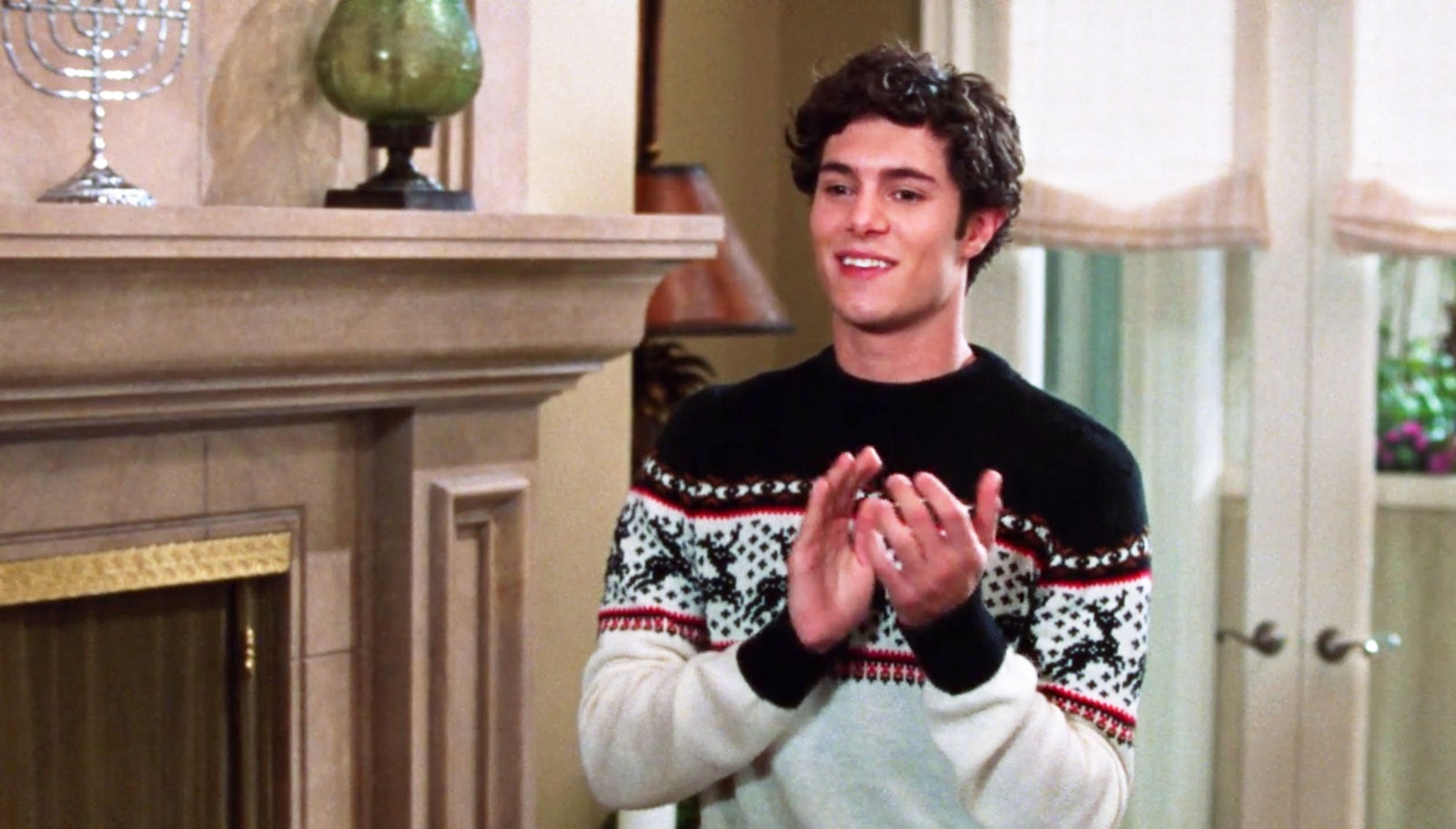Seth wore a lot of Paul Frank, a quirky local Huntington Beach brand with a monkey for a mascot that ended up going global and doing $100 million
in sales before crashing back down to earth. (Costa Mesa was lousy with Paul Frank sample sales at the time.) Eventually, his tees would inspire a whole generation of pun-saturated T-shirts available at Threadless.com and the Urban Outfitters sale corner. (The semi-ironic ugly Christmas sweater thing he kicked off with Chrismukkah is worth its own blog post, truthfully.)
But his pants really changed the game, at least for me: slim brown corduroys with itty-bitty wales; proto-skinny jeans, back when the only slim option available for men were Andrew Reynolds’ calf-hugging signatures from the skate brand KR3W. (Which I would eventually own three pairs of, all with huge tears in the crotch.) And then Levi’s joined the party. “Levi’s was starting to introduce, you know, one or two cuts that were skinny,” says Welker. “There’s a Levi's cut now that's called slim straight, which has actually gotten less slim after they introduced the 511 skinnies. But the slim straights, which were 512 when they first came out, those were a little bit slimmer. And I like found those and went, ‘Ah-ha!’” Welker would also sometimes outfit Brody in the 517s, which were a “throwback skinny” with “a little bit of a boot cut. And then we would just take the boot out cause we liked the way they fit on top.”
Costuming means telling a story in miniature—who a character is and what their motivations are, all communicated in a glimpse. Welker (whose other styling credits include American Pie and Joe Dirt) saw Seth Cohen as an opportunity to do some zagging. “Seth’s dad was a middle class lawyer who marries up in terms of the economic social strata,” she says, “[so I imagined Sandy] would be supportive of him being his own man as an only child. I just figured he was the kid that would jump on his skateboard and go to the record store and be searching for obscure vinyl. And then right next to the record store was like the cool thrift store run by the lady from Pretty in Pink.”
I had imagined that most of the shopping for the show took place at real Orange County staples: The Lab Anti-Mall (which had the sole Urban Outfitters, at least at the time), Buffalo Exchange, Salvation Army. Except The OC was mostly shot in a studio closer to Manhattan Beach, so most of the thrifting took place in LA, Beverly Hills, and occasionally my hometown of Long Beach, namely at a “great thrift store” called Meow, on 4th Street.
Currently, we’re in the midst of a great unskinnying in men’s fashion, which is cool. And necessary. But Seth Cohen, for a few brief years, made dressing like a sentient Pitchfork review something to aspire to, especially in the gaping styleless void of mid-2000s Orange County. My favorite Seth outfit is one that I would spend a decade in pursuit of: a blue button up and a tan puffer vest with a contrasting orange yoke, plus skinny jeans. (“Quintessential Seth,” adds Welker.) (I never found the right vest.)
Welker’s favorite look was a simple brown Paul Frank tee with a graphic of three guitar chords— A, D, and G—and the words “Now start a band.” She had been living in New York prior to The OC and had a lot of friends in the indie scene. She knew it was a perfect fit for Seth as soon as she laid eyes on it. “Oh God, yeah,” says Welker, laughing. “I grabbed it right away. And honestly, I got one for myself.”

